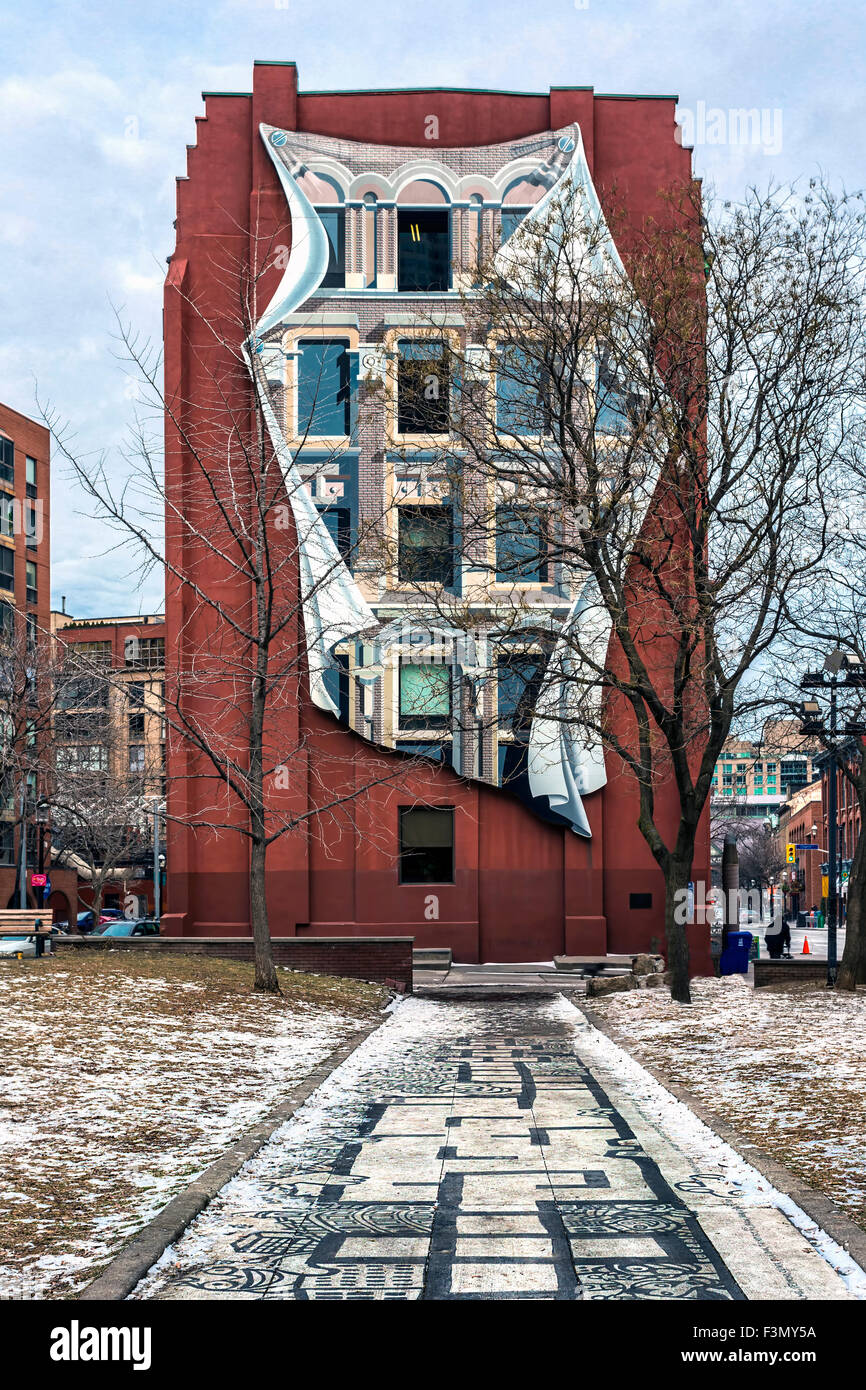Gooderham Building Hours: Plan Around Operational Hours and Local Activities.
Gooderham Building Hours: Plan Around Operational Hours and Local Activities.
Blog Article
Reveal the Rich History Behind the Gooderham Structure in Toronto
The Gooderham Building, an excellent manifestation of Richardsonian Romanesque design in Toronto, has a storied past that prolongs past its striking red brick frontage. Commissioned by the significant Gooderham and Worts distillery in 1891, this building has actually played a critical function in forming the city landscape of the St. Lawrence Market area. As we discover its beginnings, building relevance, and social impact, one can not assist but question exactly how this spots proceeds to influence Toronto's identity and heritage. What keys lie within its walls that add to its long-lasting legacy?

Beginnings of the Gooderham Building
Creating a lasting tradition, the Gooderham Structure, additionally referred to as the Flatiron Building, became a sign of Toronto's architectural evolution in the late 19th century. The structure's origins map back to 1891 when it was commissioned by the Gooderham and Worts distillery, among copyright's biggest distilling firms. Developed by architect David Roberts Jr. Gooderham Building address., the framework was uniquely placed at the crossway of Front and Wellington Streets, taking benefit of a triangular great deal produced by the merging of these roads
The structure's building and construction used local red block and terracotta, developing an unique visual that complemented the burgeoning cityscape. Initially intended to house the Gooderham and Worts offices, the building represented the success of the distillery, which had ended up being a substantial contributor to Toronto's economy. Significantly, the conclusion of the Gooderham Structure accompanied a duration of fast urbanization that characterized the age.
The establishment of this building treasure not only showcased cutting-edge design however additionally laid the foundation for future growths in Toronto. Today, it stands as a testament to the city's abundant background and adaptability, remaining to attract site visitors and admirers from around the globe.
Architectural Significance
The architectural significance of the Gooderham Building expands beyond its distinct flatiron shape, showing the cutting-edge spirit of late 19th-century layout. Finished in 1892, the framework exhibits the Richardsonian Romanesque design, characterized by its robust stonework, rounded arcs, and elaborate describing. The vibrant usage of different products, specifically the warm red brick and limestone accents, improves its visual charm and shows the workmanship of the period.
The building's three-story design is remarkable for its unified proportions and stylish cornice, which add to its iconic silhouette versus the Toronto sky line. The narrow whole lot on which it stands postured unique challenges, yet the architects, in this case, developed a framework that made best use of the available room while maintaining visual balance.
Furthermore, the Gooderham Building is a testimony to the versatility of building layout in metropolitan settings. Its long-lasting presence among modern-day growths highlights the value of preserving historical style as a way of honoring a city's past. Today, it remains a beloved spots, showing both the architectural trends of its time and the evolving story of Toronto as a lively metropolitan center.
Role in Toronto's Growth
Emerging as a crucial gamer in Toronto's metropolitan landscape, the Gooderham Building added considerably to the city's growth during the late 19th century. The building was originally made to offer as a stockroom for the Gooderham and Worts distillery, which was one of the largest distilleries in the British Empire.
As the city increased, the Gooderham Building became an essential component of the St. Lawrence Market area, which was a hub of profession and business. Its unique architectural design and popular visibility attracted interest, affecting the layout of succeeding buildings around. The building's survival through different economic shifts and metropolitan advancements reflects the durability and versatility of Toronto's historic landscape. In significance, the Gooderham Structure is not simply a building landmark; it played a critical function in shaping Toronto's identification and economic development during a transformative period in its history.
Cultural Impact and Tradition
Gooderham Structure's distinct architectural design and historic importance have actually left an enduring mark on Toronto's social landscape. As one of the city's most well-known sites, its one-of-a-kind flatiron form and intricate brickwork exemplify the Victorian architectural trends of the late 19th century. This framework not only works as an aesthetic anchor in the St. Lawrence neighborhood yet likewise personifies the spirit of a growing city during an age of financial development.
The building has actually become an icon of Toronto's rich history, motivating neighborhood musicians and professional photographers who look for to capture its charm. Its existence has fostered a sense of neighborhood identity, adding to the story of metropolitan growth. The Gooderham Building has actually played an essential role in the tourist field, drawing in site visitors anxious to discover its storied past and architectural elegance.
In enhancement to its aesthetic appeal, the building encapsulates a narrative of durability and adaptation, as it has actually transitioned via numerous uses over the decades - Gooderham Building address. Thus, the Gooderham Structure stands not just as a monument of building relevance yet also as a testimony to the progressing cultural heritage of Toronto

Reconstruction and Conservation Efforts
Numerous repair and conservation efforts have been carried out to make sure the Gooderham Building continues to be an important part of Toronto's building heritage. Originally completed in 1892, the building has visit our website actually undertaken considerable restorations to address architectural problems while maintaining its historical honesty. One of the most noteworthy remediation occurred in the late 20th century when the building was thoroughly refurbished to satisfy modern-day safety and security standards without compromising its original layout aspects.
These efforts consisted of fixing the unique red-brick frontage, bring back the famous triangular shape, and preserving the elaborate stonework information. Additionally, the structure's interior has actually seen careful updates that respect its historical value, ensuring that initial attributes such as wooden beams and attractive moldings are kept.
The Gooderham Building is now secured as a marked heritage residential property under the Ontario Heritage Act, which assists guard it from unsuitable alterations. Neighborhood interaction has played a critical duty in these conservation initiatives, with neighborhood campaigning for teams elevating awareness concerning the structure's historic importance. Consequently, the Gooderham Structure stands not only as a practical room however likewise as a testament to Toronto's abundant architectural history and withstanding social heritage.
Conclusion

Please visit one of our local supporters - Gamerama And The Repair Store - Iphone Repairs Toronto
Report this page